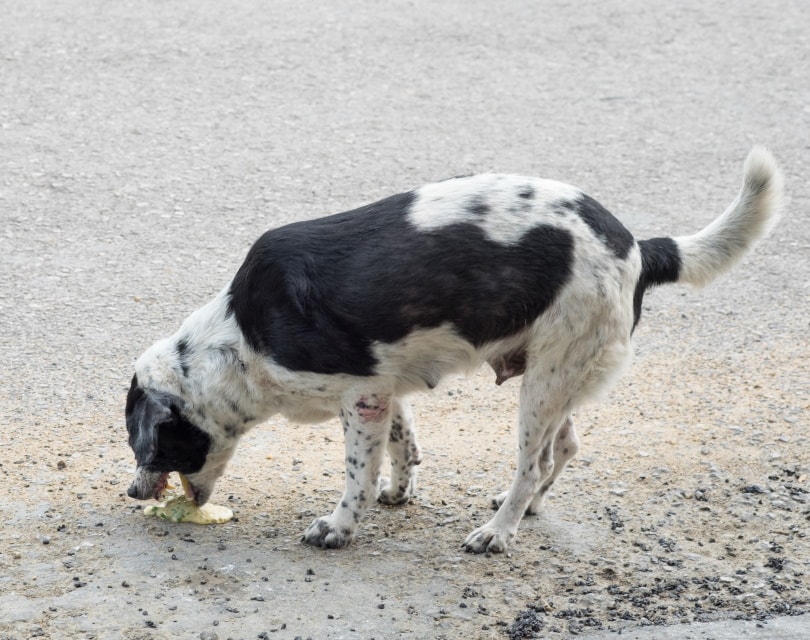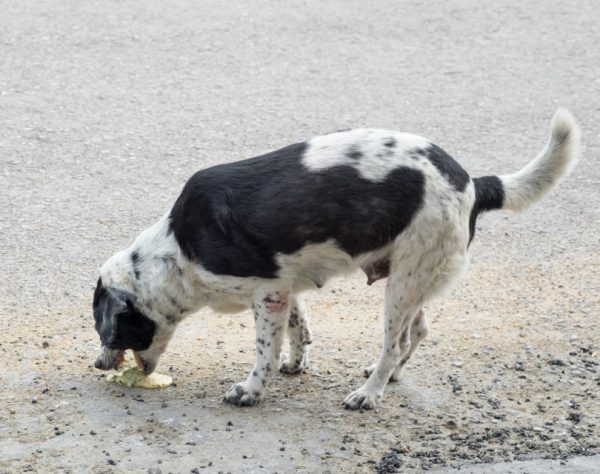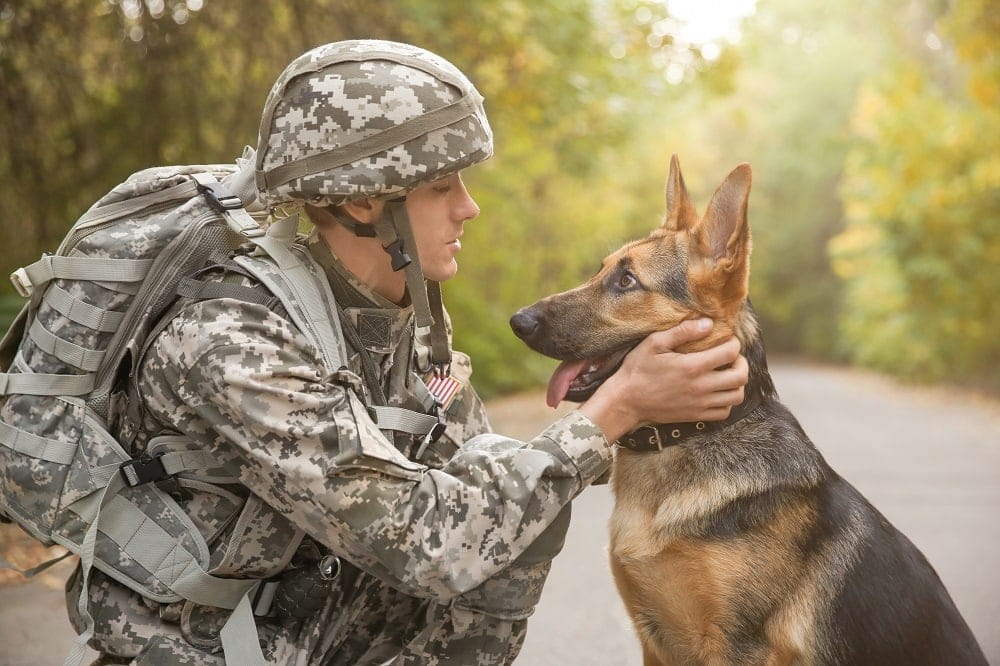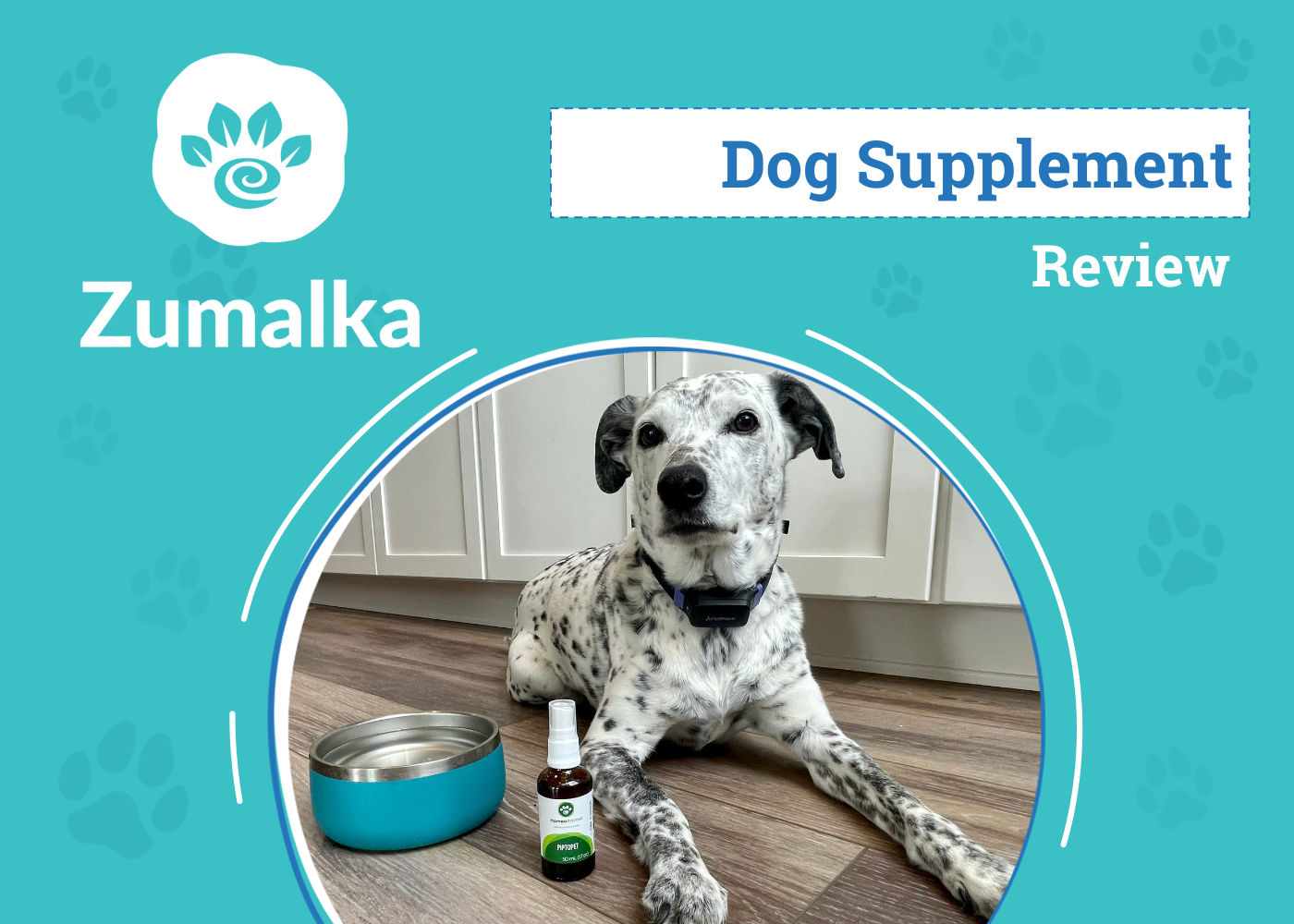If your dog is vomiting, having diarrhea, or both, you are probably worried about your furry friend and wondering what to do. There are many possible causes of gastroenteritis.
Taking note of the severity of your dog’s diarrhea or vomiting and trying to narrow down the cause will help determine the best course of action for treatment. In this article, we will discuss the possible causes of your dog’s vomiting and diarrhea, as well as potential treatment options.
However, the advice provided here is not a replacement for veterinary examination. If your dog is not well, contact your vet and get them checked out as soon as possible.
What Is Gastroenteritis?
Gastroenteritis is a term that refers to inflammation of your dog’s stomach and intestines, both of which are part of the gastrointestinal tract. Dogs with gastroenteritis may have vomiting and diarrhea in periodic episodes throughout the day. There are two different types of gastroenteritis: acute and chronic. With acute gastroenteritis, signs appear suddenly; with chronic gastroenteritis, signs can occur over multiple weeks, months, and in some cases, years. Your dog may not experience both diarrhea and vomiting; sometimes, dogs will experience only diarrhea. Occasionally a dog with gastroenteritis will experience vomiting with no diarrhea, but if this is the case, your vet may call it gastritis instead.
Typically, dogs suffering from gastroenteritis will be disinterested in food and may be lethargic. Their vomit may be yellowish, the color of your dog’s stomach bile, or any other color, and may contain food content, and their diarrhea will have a variable consistency, ranging from very soft-serve ice cream to proper liquid. A dog with gastroenteritis can become dehydrated quickly if signs continue for more than 24 hours.
Causes of Vomiting and Diarrhea
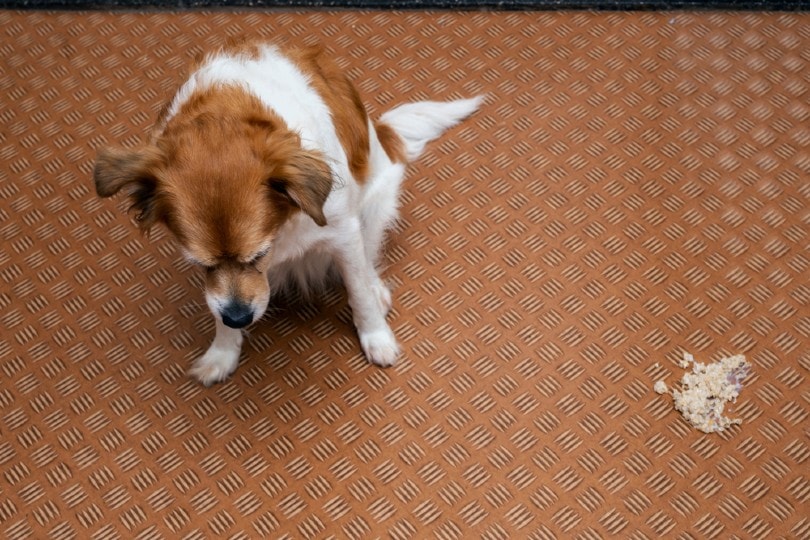
There are many possible reasons why a dog may be suffering from vomiting and diarrhea. Essentially anything that changes your dog’s microbiome can lead to problems. We have listed some common causes of gastroenteritis in dogs, but this list may not be exhaustive.
1. Viruses
Certain viruses, such as the parvovirus, particularly in young dogs and puppies that are not vaccinated, can cause vomiting and diarrhea. This can result in often fatal illness and needs prompt and intensive treatment. To help prevent your dog from becoming infected with viruses that can cause severe signs like diarrhea and vomiting, or worse, make sure your dog’s vaccinations are up to date.
2. Intestinal Parasites
There are many different types of intestinal parasites that could affect your dog. Common parasites that tend to cause diarrhea and vomiting are roundworms, tapeworms, Giardia, and hookworms. If your dog has an intestinal parasite, it can usually be identified by examining your dog’s stool.

3. Bacterial Infection
Many bacteria can lead to gastroenteritis in dogs. Some of them are E.coli, Salmonella, and Leptospira, but they can also cause other, often more severe signs of illness and damage to specific organs. These bacteria can be present in the environment, or dogs may be exposed to them through other infected animals, such as rodents, or by eating spoiled or contaminated food. Leptospirosis can be a life-threatening illness and needs prompt treatment. Speak to your vet about vaccinating your dog against Lepto.
4. Intussusception
Intussusception is when your dog’s intestine folds into itself, often due to a blockage or parasitic infestation, but can also be caused by bacterial and viral infections that cause increased and abnormal gut motility, or by tumors. Signs of intussusception include vomiting and diarrhea, as well as dehydration, abdominal pain, loss of appetite, and weight loss. This condition is fatal and can lead to septic shock and irreversible intestinal damage if not recognized and treated promptly.
5. Foreign Objects and Inedible Materials
If you think your dog may have swallowed something they shouldn’t have, your vet can perform an X-ray to see if they can identify the object in your dog’s digestive system. This often requires endoscopy or surgery to remove the material that’s blocking the dog’s stomach or intestines. Sometimes dogs eat materials that do not cause an obstruction but lead to gastroenteritis, such as various nontoxic plants, table scraps, soil, or others, as they’re not digestible and irritate the stomach and intestine.
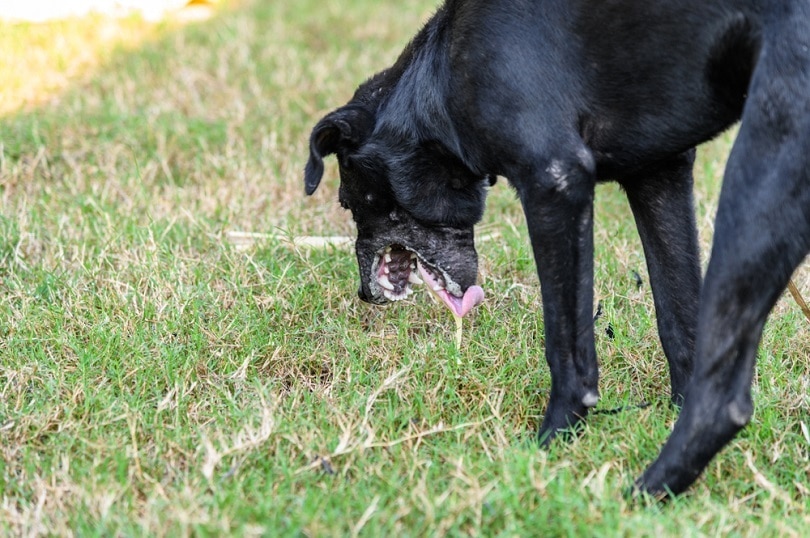
6. Poisoning
If your dog begins to vomit suddenly, is drooling, pale, or experiencing neurological signs, or their vomit or stool contains blood, it could be a sign that they have ingested something toxic. Contact your vet or emergency service immediately if you think your dog is showing signs of illness or you suspect they have eaten something poisonous.
Related Read: Why Does My Dog Throw Up After Eating Ice? (4 Potential Causes)
7. Endocrine Disease
Intestinal problems in your dog could be a sign of endocrine diseases such as diabetes or Addison’s disease. If your dog is overweight, diabetes could be the culprit. Check with your vet to make sure your dog is properly diagnosed, as both of these conditions can be life-threatening and need lifelong management and treatment.
8. Tumors
Tumors, particularly if they are in the digestive tract, can cause diarrhea and vomiting in dogs. Likewise, a dog that is already being treated for cancer with chemotherapy may experience diarrhea and vomiting. Tumors that affect other organ systems, such as the liver, may also lead to gastroenteritis, alongside other signs.
9. Organ System Disease
Underlying illnesses, such as kidney or liver disease, can also lead to signs of vomiting and diarrhea. They are often combined with other signs of disease, such as increased thirst and urination in case of kidney disease, or jaundice with liver disease. If your dog is showing any signs of illness, contact your vet straight away.
10. Gastric Dilation and Torsion or Bloat
This is a life-threatening condition that mostly occurs in large and giant deep-chested dogs. It leads to a severe gas dilation of the stomach that twists and puts a lot of pressure on the blood vessels in the abdomen and the lungs. It’s fatal if left untreated, and it requires surgery to correct the position of the stomach. Dogs can experience vomiting but more often are actually unsuccessfully trying to vomit and not bringing anything back up, with retching, burping, and a tense and distended abdomen. Two ways to prevent this from happening are by feeding frequent smaller meals throughout the day, instead of one or two big meals, and avoiding any exercise straight before or for a few hours after feeding time. However, this condition may still occur, particularly in dogs that are anxious, have a family history of bloat, or tend to eat quickly.
11. Pancreatitis
Pancreatitis is inflammation of the pancreas, a gland that participates in food digestion and produces important enzymes and hormones. Pancreatitis can develop spontaneously, with no known underlying cause, or can be secondary to certain medications or inappropriate foods, like table scraps. Often, these dogs require veterinary attention and painkillers, and sometimes the condition can even be fatal, so prompt diagnosis and treatment are crucial.
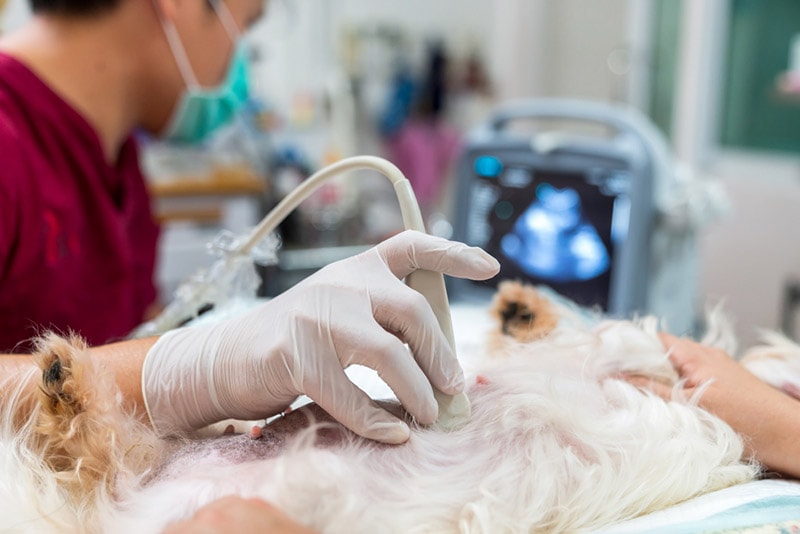
12. Hemorrhagic Gastroenteritis
This is a condition characterized by the dog passing fresh blood in the stool, or hemorrhagic diarrhea, often quite abundantly, and typically feeling nauseous, vomiting, and refusing food. It’s not entirely clear what causes it, but it is most likely bacterial in origin, leading to irritation and damage of the intestinal lining. It requires veterinary treatment and rehydration, and most dogs make a full recovery.
13. Certain Medication
Some kinds of medications, such as steroids, nonsteroidal anti-inflammatories, or even some antibiotics, can lead to signs of gastroenteritis in some dogs. Not all dogs will develop these signs. If your dog is on long-term treatment and is having vomiting or diarrhea, speak to your vet as soon as possible. If left untreated, and the meds continue without consulting your vet, sometimes this can lead to stomach ulcers, which can be life-threatening.
14. Food Allergies
Food allergies in dogs are actually quite common and may lead to signs of gastroenteritis, although more often they affect the skin, leading to allergic skin disease. This manifests as excessive itching, licking, scratching, skin sores particularly on the paws, and frequent ear infections, but also vomiting, diarrhea, excess gas, weight loss, and lethargy. Dogs are most commonly allergic to dairy, beef, chicken, and eggs. Speak to your vet if you believe your dog has food allergies.
13. Inflammatory Bowel Disease
Inflammatory bowel disease, or IBD for short, is a syndrome in dogs that is characterized by chronic irritation of the gastrointestinal tract, which manifests as vomiting, weight loss, diarrhea, and poor appetite. Often the exact cause is unknown and requires a lengthy diagnostic process to rule out bacterial, viral, and parasitic causes and food allergies.
Possible Treatments
Now that you know some of the potential causes of vomiting and diarrhea in dogs, let’s break down the different options for treatment. If your dog is vomiting and/or having diarrhea, it’s always best to speak to your vet first. As you can see, there are many causes for vomiting and diarrhea, and some are more serious than others, while quite a few can be fatal if left untreated. Your vet will offer advice on whether to try home management first or bring your dog in straight away. Also, if your dog is getting worse, it’s best not to waste time and get them checked out promptly.
For Very Mild or Short-Term Diarrhea or Vomiting
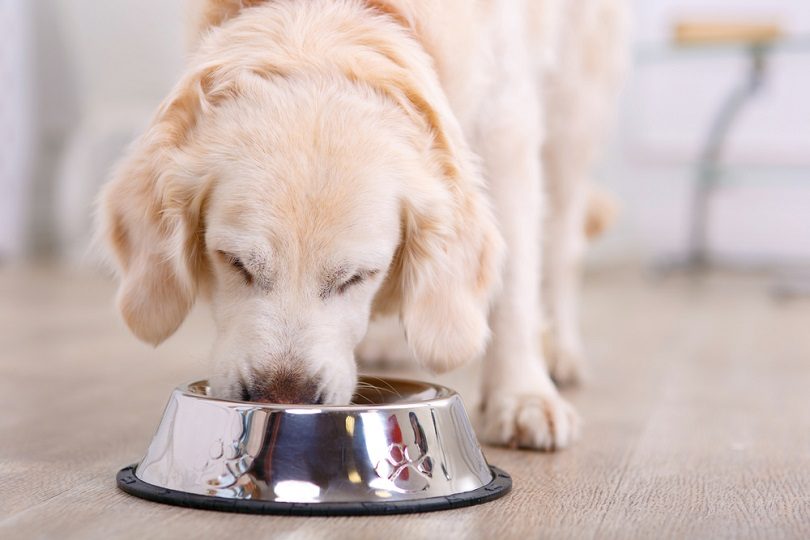
Not all cases of diarrhea and vomiting are serious, but it can be difficult to know in the beginning. Speaking to your vet will help to decide if your dog requires treatment or can be managed and monitored at home. In mild cases, your vet may recommend trying some home remedies first. If your dog has only vomited once, is not otherwise unwell, and is not a puppy or an older dog with underlying health concerns, your vet may suggest withholding food for a few hours. After that initial period, you can start slowly reintroducing food into your dog’s diet, ideally bland and simple low-fat proteins such as chicken (unless your dog has a chicken allergy). Although you are withholding food, make sure your dog is still getting plenty of water. Puppies and older or ill dogs should not be starved and should be checked out by your vet.
For diarrhea, you could try giving your dog a bland diet of boiled chicken and white rice. If your dog’s stools start returning to normal, you can begin slowly reintroducing their normal dog food into the diet. Any food changes need to be done gradually over 7 days. You could also try giving them probiotics to see if their stools improve. Consider collecting a poo sample over 3 days, as your vet may need to send it off if your dog’s stools are not improving.
Visiting the Vet
If your dog’s vomiting or diarrhea doesn’t improve or gets worse within 12 to 24 hours, or they are lethargic and weak, have a distended abdomen and pale gums, or have blood in the vomit or stool or black stools, it’s crucial to see a vet straight away.
If you have an unwell puppy or an elderly dog, or if they are experiencing signs such as weight loss, vomiting, lethargy, or collapse, diarrhea with blood, or diarrhea after receiving medication or vaccinations, don’t wait to seek treatment. Only your vet can examine your dog to determine what exactly is causing these signs. Make sure you share your dog’s medical history with your vet so that they can make an accurate diagnosis. The sooner they receive a diagnosis, the sooner their path to recovery—and comfort—can begin.
Conclusion
It can be unpleasant and scary when your dog is vomiting and having diarrhea. Pay close attention to your dog’s signs; if they seem mild, speak to your vet who may advise you to try some home remedies. If your dog’s signs are worsening or are severe to start with, or if you are simply unsure, take your dog to the vet to ensure they get adequate care. Hopefully, your pet will be feeling better in no time.
You may also be interested in:
- How to Clean Dog Vomit From Carpet (4 Ideas & Tips)
- How to Clean Dog Vomit from a Wool Rug (8 Ideas and Tips)
Featured Image Credit: Mumemories, Shutterstock
Contents
- What Is Gastroenteritis?
- Causes of Vomiting and Diarrhea
- 1. Viruses
- 2. Intestinal Parasites
- 3. Bacterial Infection
- 4. Intussusception
- 5. Foreign Objects and Inedible Materials
- 6. Poisoning
- 7. Endocrine Disease
- 8. Tumors
- 9. Organ System Disease
- 10. Gastric Dilation and Torsion or Bloat
- 11. Pancreatitis
- 12. Hemorrhagic Gastroenteritis
- 13. Certain Medication
- 14. Food Allergies
- 13. Inflammatory Bowel Disease
- Possible Treatments
- Conclusion

